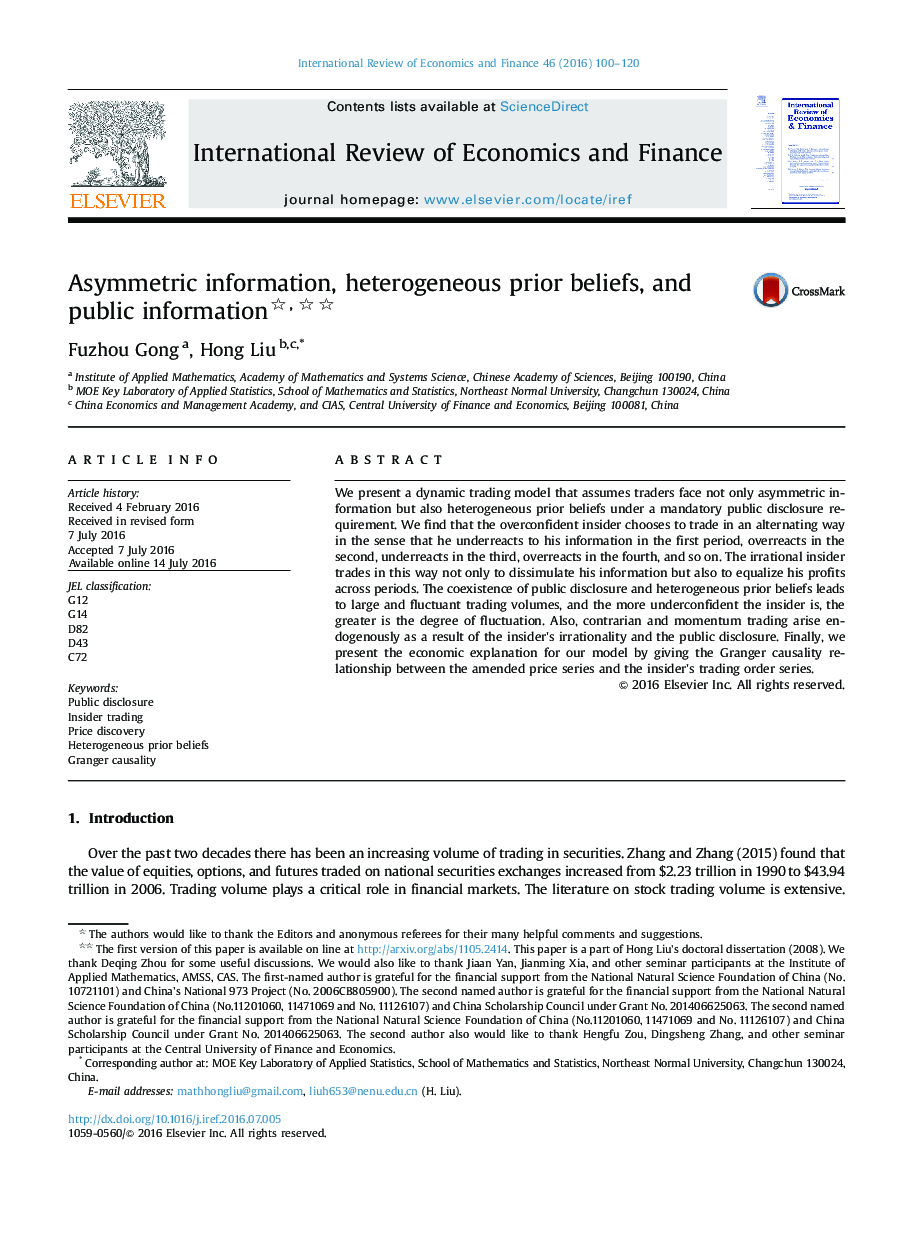| Article ID | Journal | Published Year | Pages | File Type |
|---|---|---|---|---|
| 5083120 | International Review of Economics & Finance | 2016 | 21 Pages |
â¢We develop a model where the traders face heterogeneous prior beliefs.â¢Insiders' behaviors are studied under a mandatory public disclosure requirement.â¢The overconfident insider chooses to trade in an alternating way.â¢We present the economic explanation by giving the Granger causality analysis.
We present a dynamic trading model that assumes traders face not only asymmetric information but also heterogeneous prior beliefs under a mandatory public disclosure requirement. We find that the overconfident insider chooses to trade in an alternating way in the sense that he underreacts to his information in the first period, overreacts in the second, underreacts in the third, overreacts in the fourth, and so on. The irrational insider trades in this way not only to dissimulate his information but also to equalize his profits across periods. The coexistence of public disclosure and heterogeneous prior beliefs leads to large and fluctuant trading volumes, and the more underconfident the insider is, the greater is the degree of fluctuation. Also, contrarian and momentum trading arise endogenously as a result of the insider's irrationality and the public disclosure. Finally, we present the economic explanation for our model by giving the Granger causality relationship between the amended price series and the insider's trading order series.
